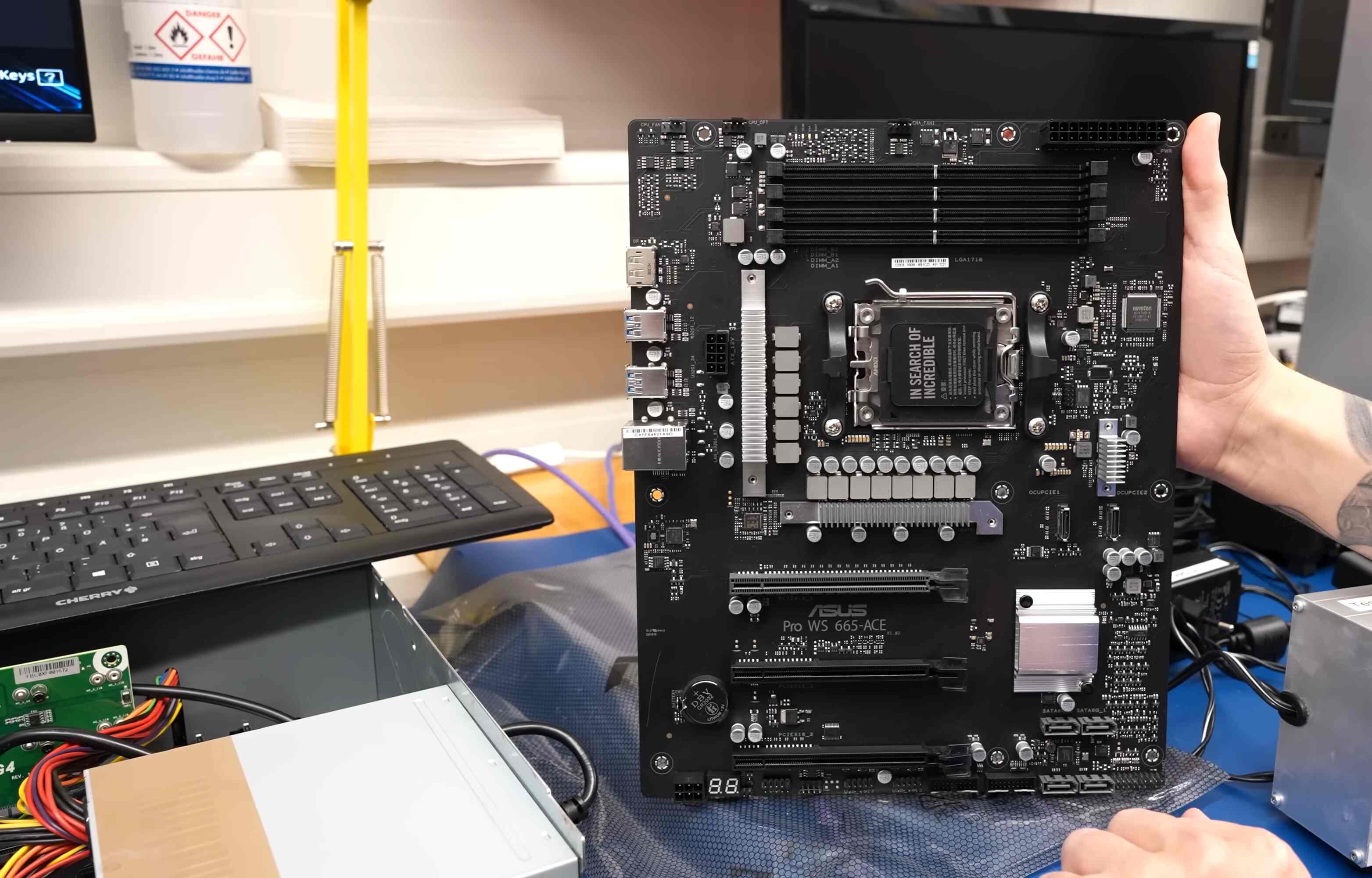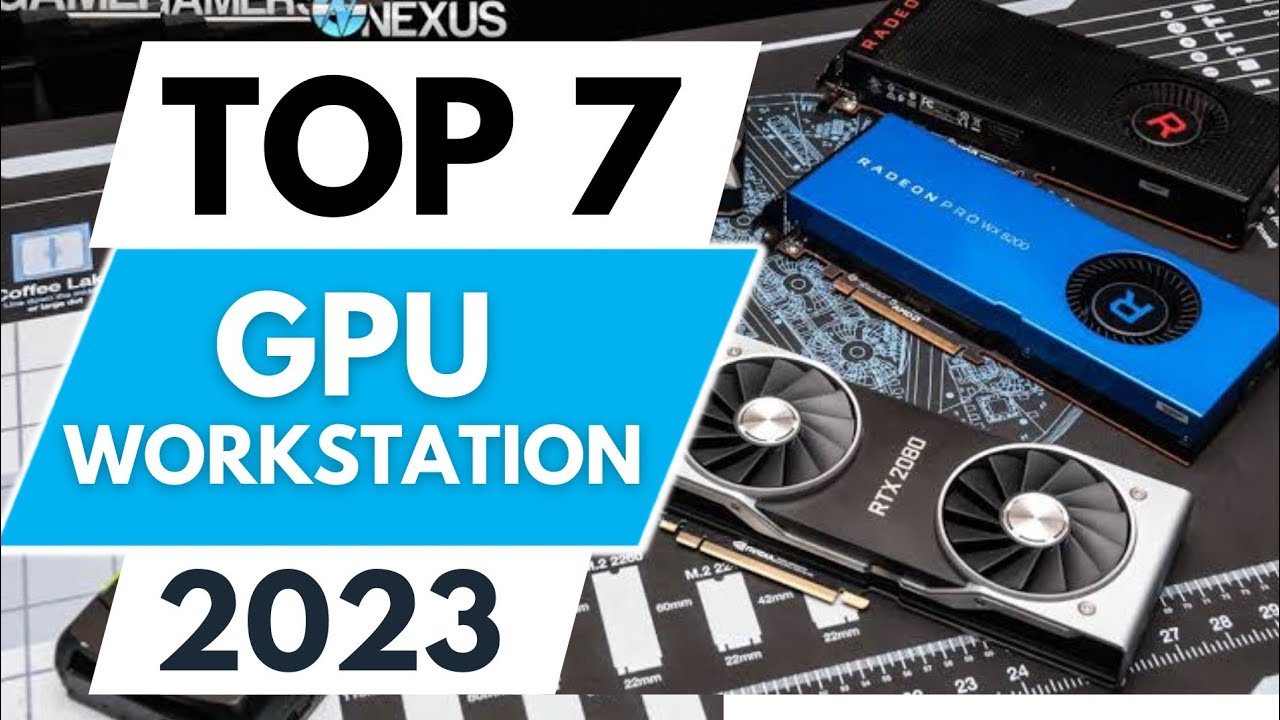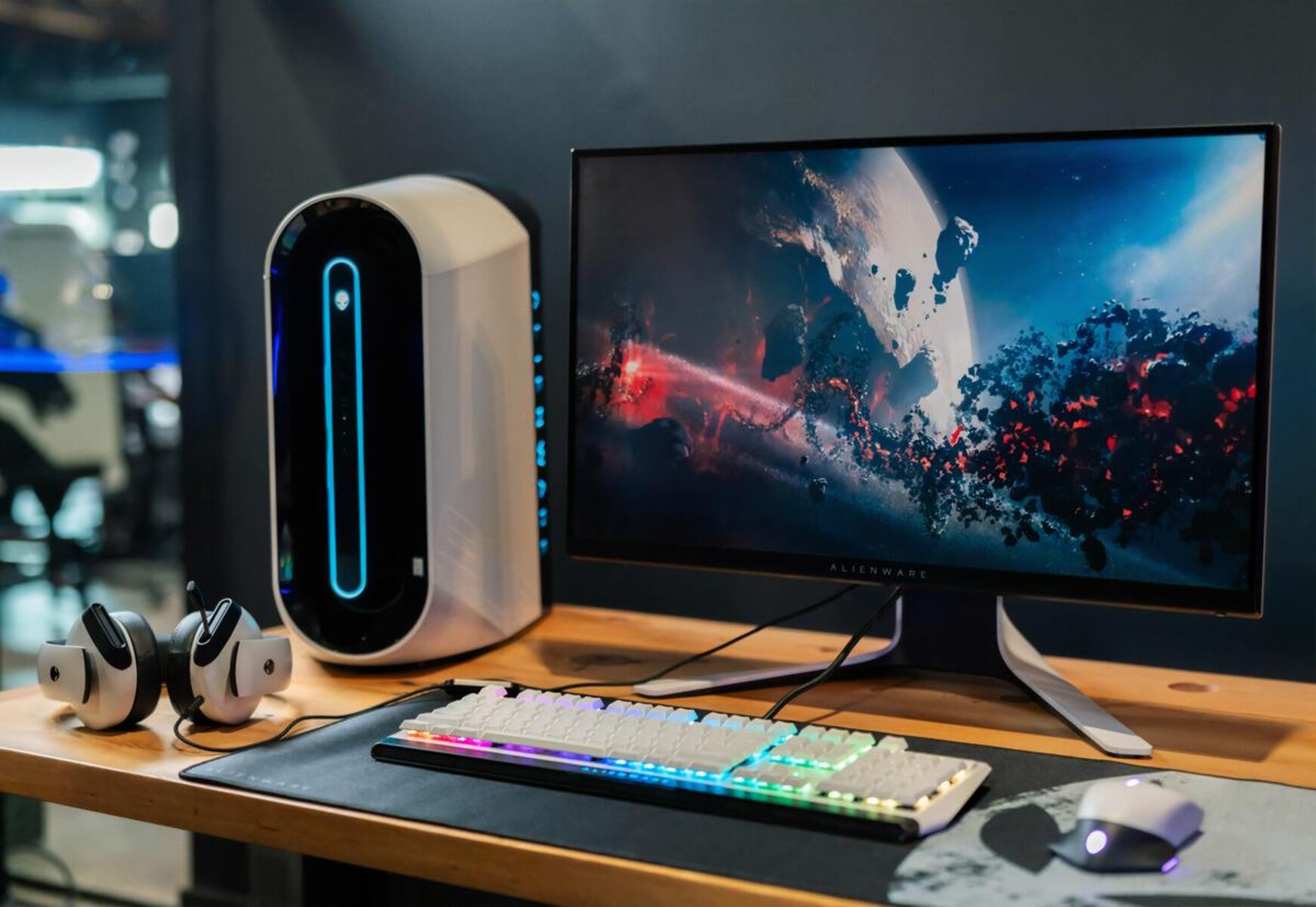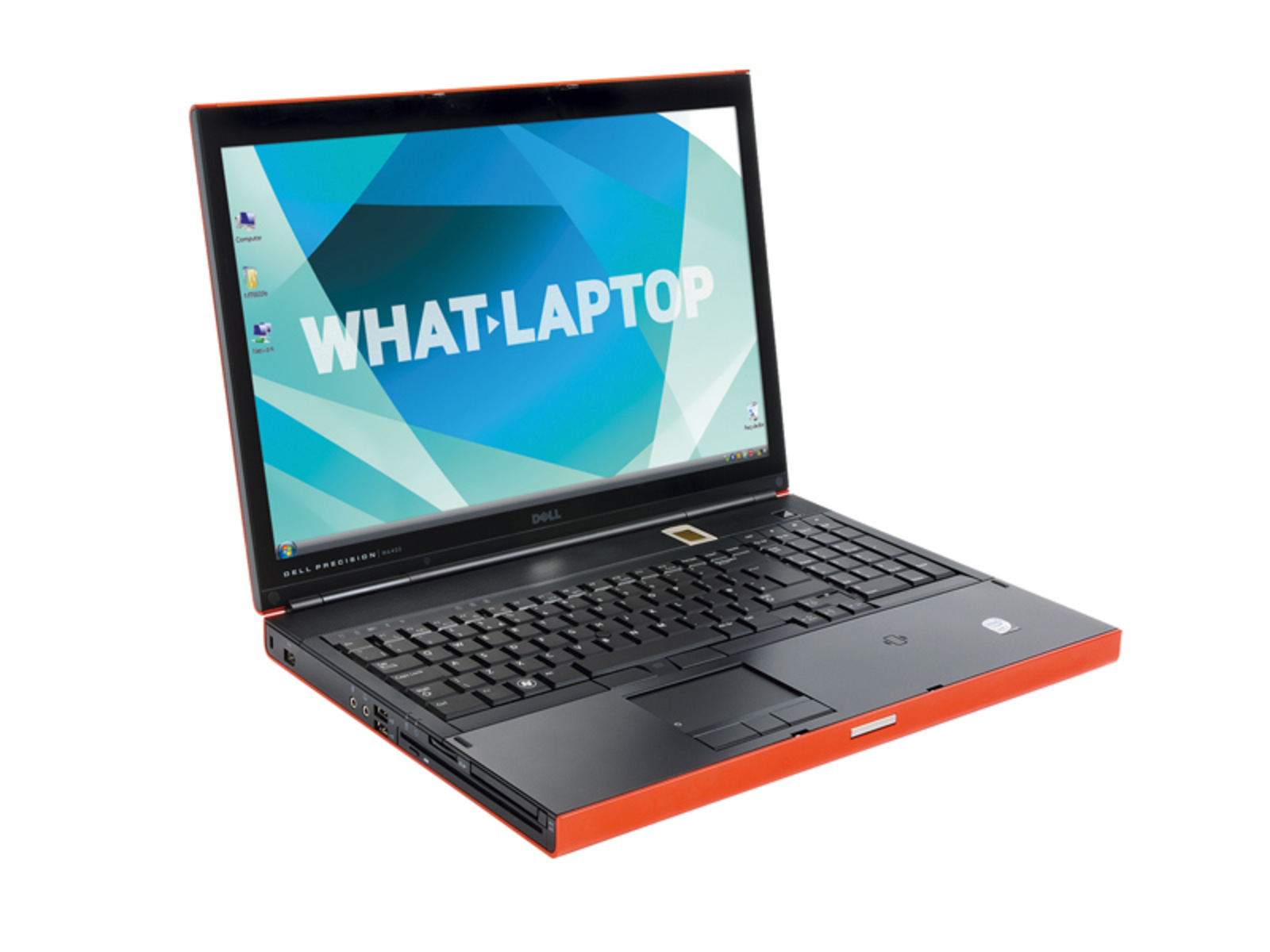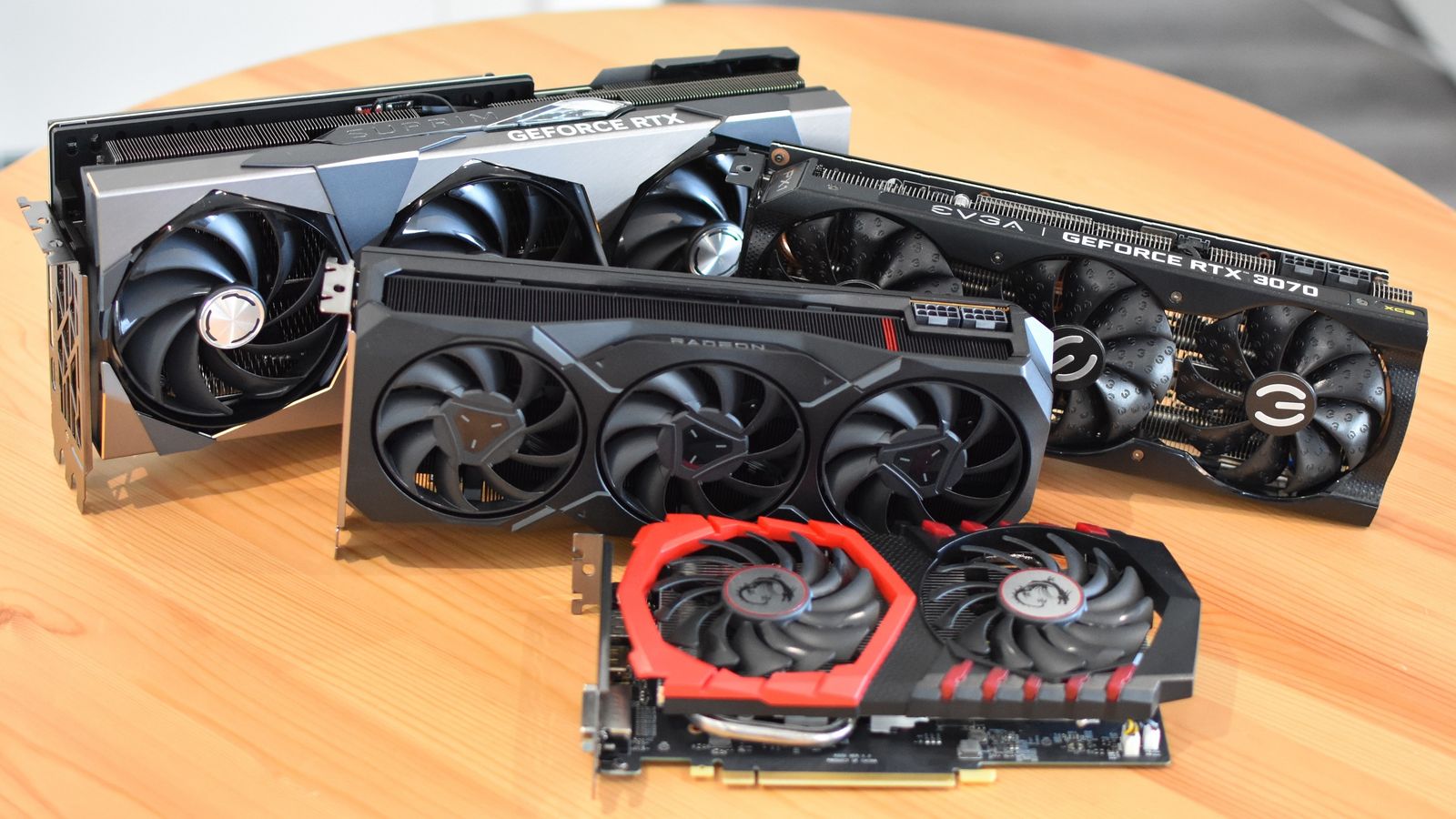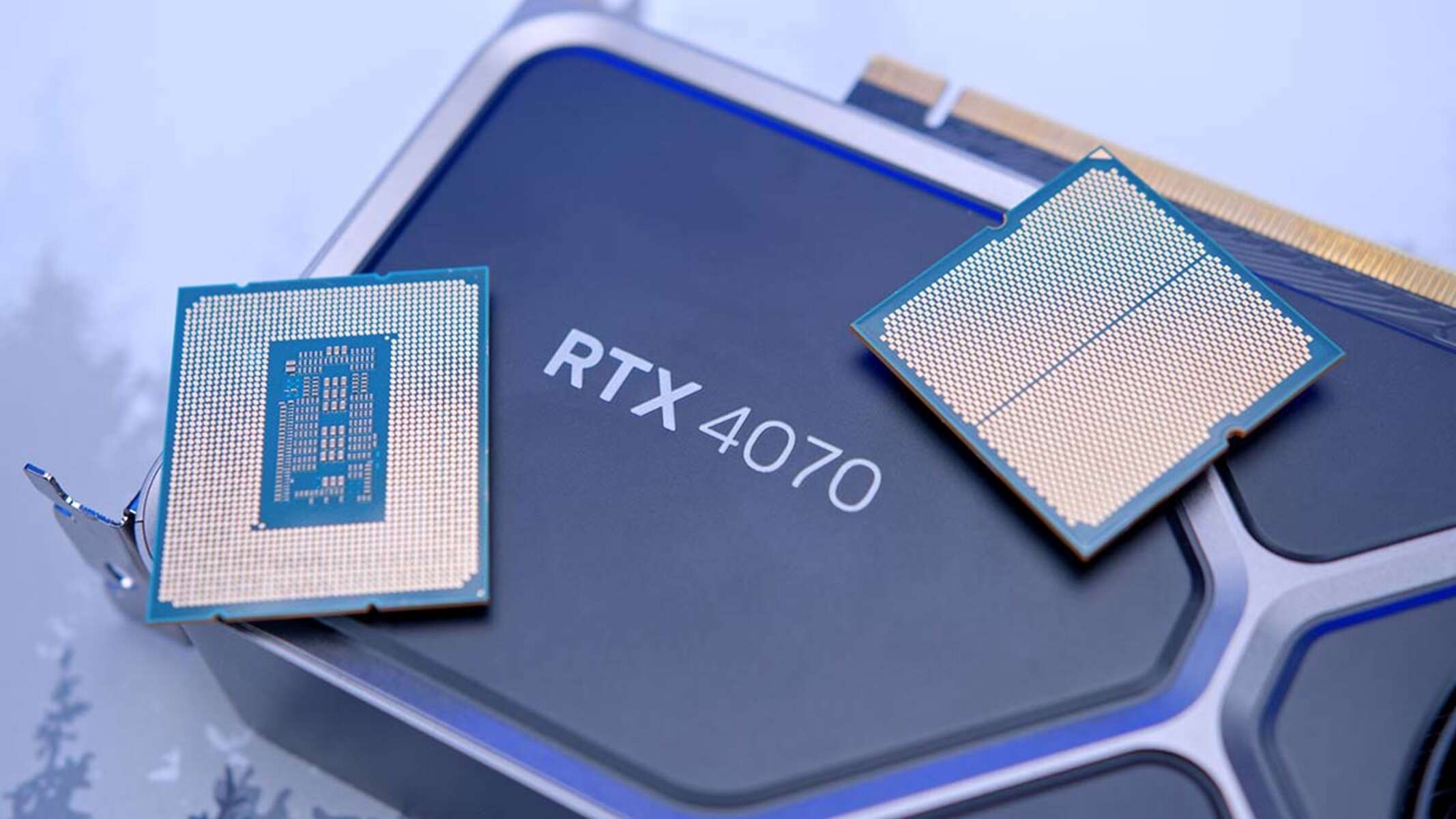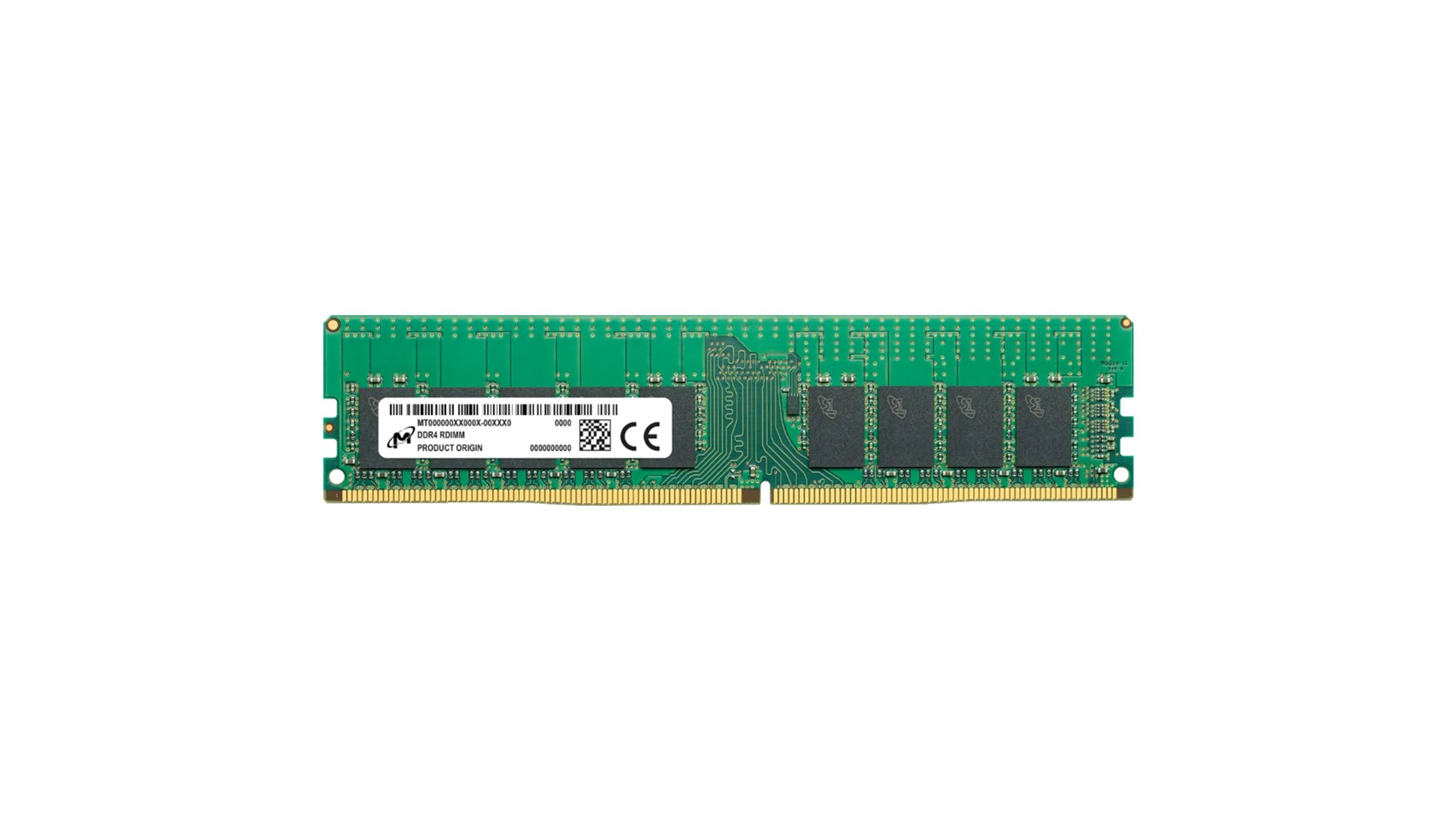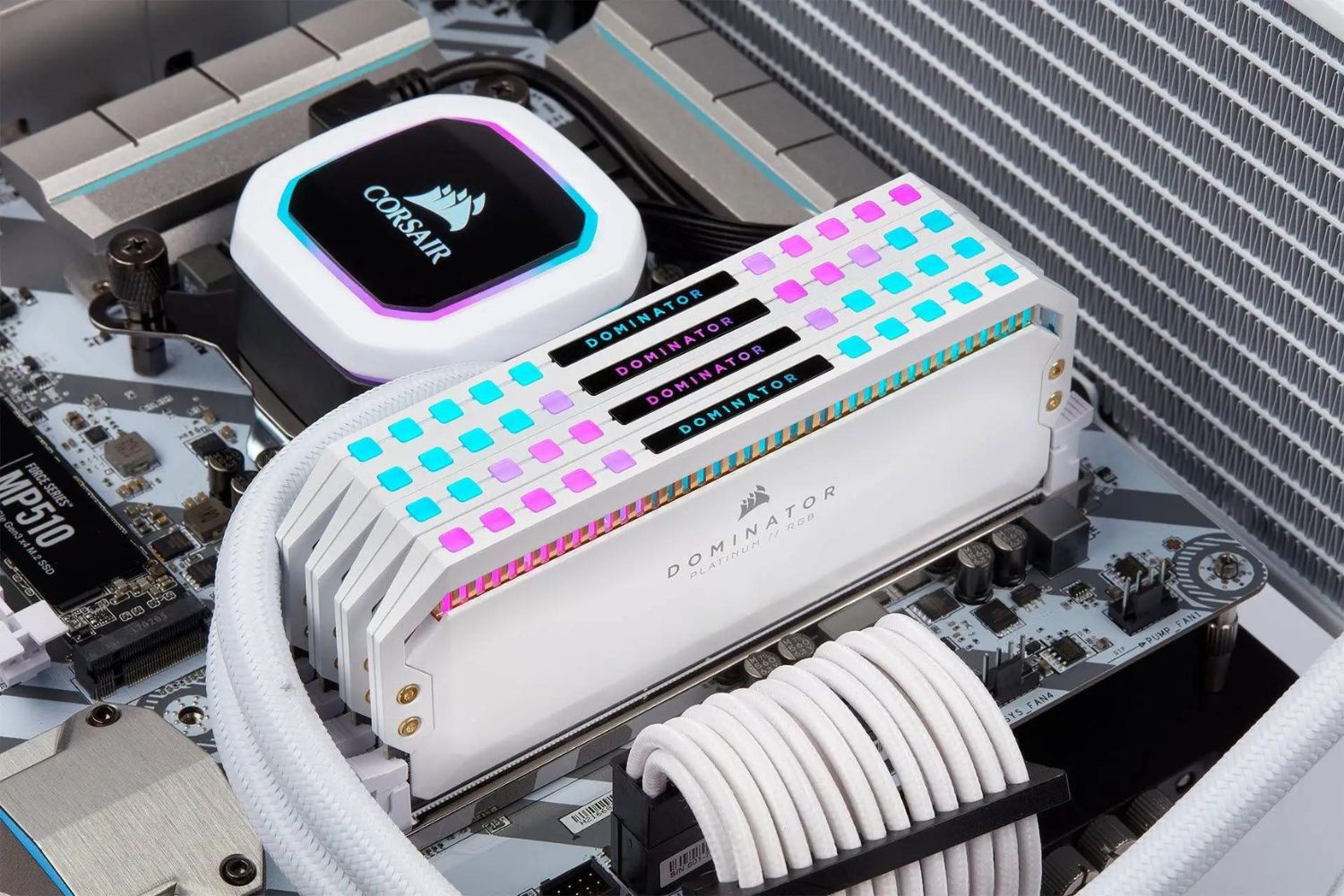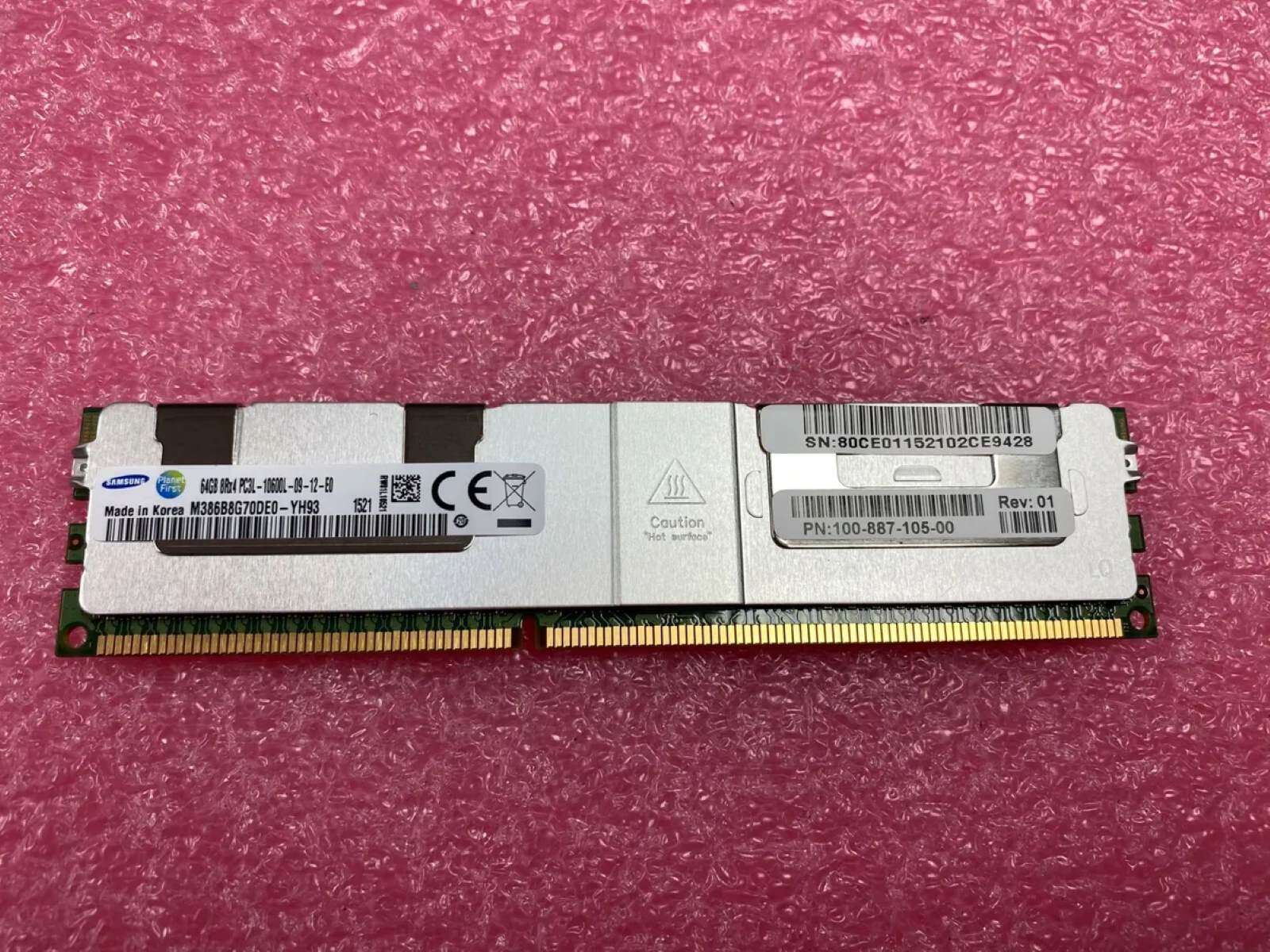Introduction
When considering building or upgrading a workstation, one crucial component to pay attention to is the chipset. The chipset plays a significant role in the overall performance and capabilities of the workstation. It serves as the backbone that connects various hardware components, such as the CPU, memory, storage, and more, to ensure their seamless operation.
Choosing the right chipset for a workstation is essential to ensure optimal performance and compatibility with other components. It can have a significant impact on the speed and efficiency of tasks, especially in demanding work environments.
In this article, we will delve into the world of chipsets for workstations, exploring the key factors to consider and comparing popular options from both Intel and AMD.
Whether you are a creative professional working with resource-intensive applications like video editing, 3D rendering, or a data analyst crunching complex datasets, selecting the right chipset is crucial to meet your specific requirements and get the best performance out of your workstation.
Throughout this article, we will guide you through the process of choosing the right chipset for your workstation, highlighting the features and benefits of different Intel and AMD chipsets. By the end, you’ll have a better understanding of the options available and be able to make an informed decision that aligns with your workload and budget.
What is a Chipset?
A chipset is a crucial component of a computer’s motherboard that facilitates the communication and coordination between various hardware components. It serves as the central hub that connects the CPU, memory, storage devices, expansion slots, and other peripherals, ensuring they work together harmoniously.
The chipset consists of two main parts, namely the Northbridge and the Southbridge. The Northbridge handles the high-speed communication between the CPU, memory, and graphics card, while the Southbridge manages the slower communication with peripherals like USB ports, SATA connections, and audio devices.
The chipset not only acts as a communication conduit but also plays a vital role in determining the capabilities and limitations of a motherboard. It dictates the supported CPU and memory types, the number and types of expansion slots available, the maximum storage capacity, and the overall performance of the system.
Chipsets can vary in terms of their features, capabilities, and performance levels, catering to different types of computer systems. For workstations, chipsets with robust performance, stability, and compatibility are crucial to handle resource-intensive tasks efficiently.
As technology advances, chipsets continue to evolve, offering new features and improved performance. Chipset manufacturers such as Intel and AMD regularly release new chipsets tailored to the needs of various computer systems, including workstations.
In the next sections, we will explore the key factors to consider when choosing a chipset for a workstation and compare the popular Intel and AMD chipsets available in the market today.
Factors to Consider When Choosing a Chipset for Workstation
Choosing the right chipset for your workstation is a decision that can significantly impact its performance and functionality. To make an informed choice, there are several key factors to consider:
- Processor Compatibility: The chipset you select should be compatible with the processor you plan to use. Different chipsets support different processor generations and socket types. Ensure that the chipset supports the latest processor technologies and offers the necessary features to unlock the full potential of your CPU.
- Performance and Workload: Consider the specific workload and tasks you will be performing on your workstation. If you work with resource-intensive applications like video editing, 3D rendering, or scientific simulations, opt for a chipset that offers robust performance, multiple cores, and support for high-speed memory. This will ensure smooth multitasking and enhanced overall performance.
- Expandability: Think about your future needs for expanding your workstation. If you anticipate the need for additional storage devices, multiple graphics cards, or other expansion cards, choose a chipset that offers ample PCIe slots, SATA ports, and USB connectivity. This will provide the flexibility to upgrade and expand your workstation as needed.
- Connectivity and Ports: Consider the connectivity options and ports offered by the chipset. Look for features such as USB 3.0 or 3.1 support, Thunderbolt compatibility, and the number of available SATA ports. Having a diverse range of connectivity options will allow you to connect various peripherals and devices without limitations.
- Stability and Reliability: Workstations often run for long hours under heavy loads, requiring stability and reliability. Look for chipsets known for their stable performance and robust build quality. Check for user reviews and recommendations to ensure that the chipset has a good reputation for reliability and longevity.
- Budget: Finally, consider your budget when selecting a chipset for your workstation. Different chipsets come at varying price points, and it’s important to find the right balance between performance and cost-effectiveness. Evaluate your needs, compare the features and prices of different chipsets, and choose one that offers the best value for your budget.
By carefully considering these factors, you can narrow down your options and choose a chipset that aligns with your specific requirements and budget. In the next sections, we will explore the popular Intel and AMD chipsets for workstations, highlighting their features and benefits.
Intel Chipsets for Workstations
Intel is a leading manufacturer of chipsets and processors, offering a wide range of options specifically designed for workstations. Intel chipsets are known for their performance, stability, and extensive feature sets. Here are some notable Intel chipsets for workstations:
- Intel X299: The Intel X299 chipset is designed for high-end workstations and supports the latest Intel Core X-series processors. It offers extensive IO capabilities, including USB 3.1 Gen 2, Thunderbolt 3 support, and up to 24 PCIe lanes for graphics cards, storage devices, and other peripherals. The X299 chipset also supports Intel Optane memory, providing enhanced system responsiveness and accelerated storage performance.
- Intel Z590: The Intel Z590 chipset is targeted towards mainstream workstations and supports the latest 11th generation Intel Core processors. It offers robust performance and a wide range of connectivity options, including USB 3.2 Gen 2×2, Thunderbolt 4 support, and PCIe 4.0 compatibility. The Z590 chipset also features Intel Rapid Storage Technology for improved storage performance and Intel Optane memory support for responsiveness and fast system boot.
- Intel W480: The Intel W480 chipset is designed for entry-level workstations and supports 10th generation Intel Core processors. It offers a balance of performance and affordability, providing features such as PCIe 3.0 support, USB 3.2 Gen 2, and Intel Optane memory support. While not as feature-rich as higher-end chipsets, the W480 chipset still delivers reliable performance for less demanding workstation tasks.
These are just a few examples of Intel chipsets available for workstations. It’s important to note that Intel regularly releases new chipsets with improved features and performance. When choosing an Intel chipset, consider the specific requirements of your workstation and select a chipset that provides the necessary features and future-proofing based on your workload.
Next, we will explore the AMD chipsets available for workstations, offering an alternative option for workstation builders and users.
AMD Chipsets for Workstations
AMD is another major player in the world of chipsets and processors, offering a range of options specifically designed for workstations. AMD chipsets are known for their excellent performance, reliability, and support for advanced technologies. Here are some notable AMD chipsets for workstations:
- AMD X570: The AMD X570 chipset is designed for high-performance workstations and supports AMD Ryzen processors. It offers PCIe 4.0 support, providing increased bandwidth for graphics cards, storage devices, and other peripherals. The X570 chipset also features USB 3.2 Gen 2 support, SATA III connectivity, and AMD StoreMI technology for accelerated storage performance.
- AMD B550: The AMD B550 chipset is targeted towards mainstream workstations and supports AMD Ryzen processors. It offers PCIe 4.0 support for graphics cards and storage devices, providing faster data transfer speeds. The B550 chipset also includes USB 3.2 Gen 2 support, SATA III connectivity, and support for AMD StoreMI technology.
- AMD A520: The AMD A520 chipset is designed for entry-level workstations and supports AMD Ryzen processors. It offers a cost-effective solution while still delivering reliable performance. The A520 chipset features PCIe 3.0 support, USB 3.2 Gen 2 support, and SATA III connectivity, making it suitable for less demanding workstation tasks.
AMD chipsets often offer excellent value for the performance they deliver, making them a popular choice among workstation builders. They provide a wide range of features and support the latest technologies, ensuring a seamless computing experience for demanding workloads.
When selecting an AMD chipset for your workstation, consider factors such as the specific requirements of your workload, your budget, and any future expansion plans. AMD chipsets are known for their backwards compatibility, allowing for processor upgrades without the need to change the chipset, offering a cost-effective upgrade path.
Now that we have explored both Intel and AMD chipsets for workstations, it’s time to compare the two and decide which one may be the best fit for your needs.
Comparison between Intel and AMD Chipsets
When it comes to choosing between Intel and AMD chipsets for workstations, there are several factors to consider. Both Intel and AMD offer a wide range of chipsets catering to different needs and budgets. Let’s compare them based on key aspects:
- Performance: Both Intel and AMD chipsets offer excellent performance. Intel chipsets are often known for single-threaded performance and higher clock speeds, making them a popular choice for tasks that benefit from strong single-core performance. On the other hand, AMD chipsets excel in multi-threaded performance, making them ideal for highly parallel workloads such as content creation, rendering, and scientific simulations.
- Price: AMD chipsets generally offer better value for money compared to Intel chipsets. They provide similar performance at a lower price point, making them a cost-effective choice for budget-conscious workstation builders. Intel chipsets, however, may offer additional features and technologies in their higher-priced options.
- Compatibility: Both Intel and AMD chipsets are compatible with a wide range of processors. However, it’s crucial to verify the compatibility of the chipset with the specific processor model and socket type you plan to use. Intel chipsets may provide better backward compatibility, allowing for upgrades without changing the chipset, while AMD chipsets often require a compatible socket for newer processor generations.
- Features and Technologies: Chipsets from both Intel and AMD offer various features and technologies. Intel chipsets often provide advanced connectivity options such as Thunderbolt support and Intel Optane memory technology. AMD chipsets, on the other hand, offer features like PCIe 4.0 support, which provides faster data transfer speeds for storage devices and graphics cards.
- Ecosystem: Consider the overall ecosystem surrounding the chipset, including motherboard availability and support. Both Intel and AMD have a wide range of motherboard options available from various manufacturers, but it’s important to ensure that the specific motherboard you choose meets your requirements and offers reliable compatibility and support.
Ultimately, the choice between Intel and AMD chipsets for your workstation will depend on your specific needs, budget, and preferences. Consider the performance requirements of your workload, the features you need, and the price-to-performance ratio you desire. Research and read reviews on specific chipsets and motherboards to make an informed decision.
Now that you have a better understanding of the key factors to consider and the differences between Intel and AMD chipsets, you can confidently select the one that best aligns with your workstation needs.
Conclusion
Choosing the right chipset for your workstation is a critical decision that can significantly impact its performance and capabilities. Both Intel and AMD offer a wide range of chipsets designed specifically for workstations, catering to different needs and budgets.
When selecting a chipset, consider factors such as processor compatibility, performance, expandability, connectivity options, stability, and your budget. Intel chipsets are known for their robust performance, stability, and advanced features such as Thunderbolt support and Intel Optane memory. On the other hand, AMD chipsets offer excellent value for money, strong multi-threaded performance, and features such as PCIe 4.0 support.
To make an informed decision, it’s crucial to evaluate and compare the specific chipsets available from both Intel and AMD based on their features, compatibility, and price-to-performance ratio. Consider your workload requirements, future expansion needs, and overall ecosystem surrounding the chipset, including motherboard availability and support.
By carefully considering these factors, you can choose the chipset that best aligns with your specific workstation needs, providing the necessary performance, stability, and features required for your workloads. Take the time to research and read reviews on specific chipsets and motherboards to ensure you make the right choice for your workstation setup.
Remember, the chipset is just one component of the overall workstation configuration. It is equally important to choose other components such as the CPU, memory, storage, and graphics card that complement and enhance the capabilities of the chosen chipset.
By investing time and effort in selecting the right chipset, you can build a powerful and reliable workstation that meets your needs and performs optimally for demanding tasks. Happy workstation building!







